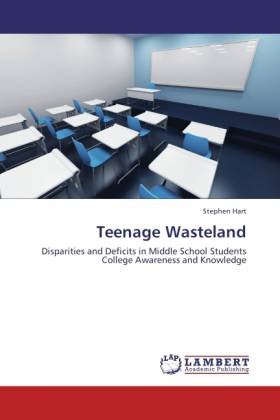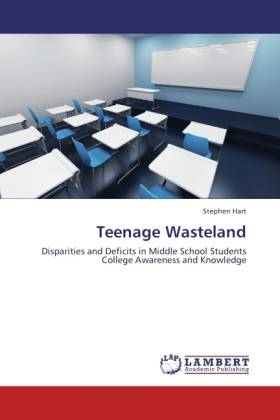
- Afhalen na 1 uur in een winkel met voorraad
- Gratis thuislevering in België vanaf € 30
- Ruim aanbod met 7 miljoen producten
- Afhalen na 1 uur in een winkel met voorraad
- Gratis thuislevering in België vanaf € 30
- Ruim aanbod met 7 miljoen producten
Teenage Wasteland
Disparities and Deficits in Middle School Students College Awareness and Knowledge
Stephen Hart
Paperback | Engels
€ 79,45
+ 158 punten
Omschrijving
In the United States modern knowledge-based economy, a quality education is a basic prerequisite for success. However, troublesome achievement and opportunity gaps persist throughout the entire education spectrum. Benefitting from our nation s post-secondary institutions is now more about ability to pay than ability to achieve. Educators worry that the systems are reproducing class structures, not breaking them down. Credible research suggests that too many capable youth are not reaching their full academic potential. Unable to overcome deficits in economic, social and cultural capital, students do not possess a habitus that propels them to overcome the significant barriers they face in order to make the transition from high school to college. Early intervention is the key to reversing these trends. The middle school years (grades seven and eight) are a particularly important time to build college awareness among disadvantaged youth. This book seeks a greater understanding of the disparities and deficits among middle school students concerning college awareness and knowledge.
Specificaties
Betrokkenen
- Auteur(s):
- Uitgeverij:
Inhoud
- Aantal bladzijden:
- 144
- Taal:
- Engels
Eigenschappen
- Productcode (EAN):
- 9783846510643
- Verschijningsdatum:
- 27/09/2011
- Uitvoering:
- Paperback
- Afmetingen:
- 152 mm x 229 mm
- Gewicht:
- 222 g

Alleen bij Standaard Boekhandel
+ 158 punten op je klantenkaart van Standaard Boekhandel
Beoordelingen
We publiceren alleen reviews die voldoen aan de voorwaarden voor reviews. Bekijk onze voorwaarden voor reviews.









